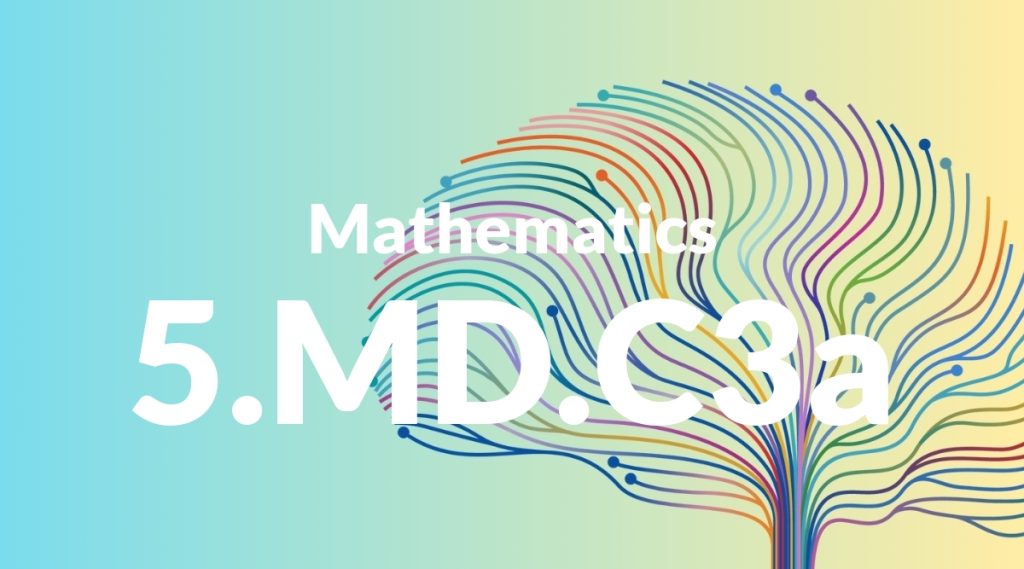Standard: 5.MD.C3a – A cube with side length 1 unit, called a ‘unit cube,’ is said to have ‘one cubic unit’ of volume, and can be used to measure volume.
Grade level: Grade 5
Subject: Mathematics
Domain: Measurement & Data
Teacher Overview
This standard focuses on understanding the concept of volume through the use of unit cubes. It is crucial because it lays the foundation for more advanced geometric and measurement concepts that students will encounter in higher grades. Students should be comfortable with basic geometric shapes and the concept of measuring area using square units. They should also understand the idea of counting and using units to measure physical attributes.
After mastering this standard, students will be equipped to tackle more complex volume calculations and understand the practical applications of volume measurement in everyday life and various professions.
Common Misconception 1
A common misconception is that volume and area are the same. Students might confuse the two because both involve measurement and units. However, area is a measure of surface space in two dimensions, while volume measures space in three dimensions.
Intervention 1
To address this misconception, use visual aids such as 3D models and diagrams to illustrate the difference between area and volume. Engage students in hands-on activities where they measure both area and volume of different objects.
Common Misconception 2
Another misconception is that only cubes can be used to measure volume. Students might not realize that unit cubes can be used to measure the volume of various shapes, not just cubes.
Intervention 2
Provide a variety of examples and non-examples. Show students how unit cubes can fit into different shapes, and encourage them to use unit cubes to measure the volume of objects in their environment.
Prerequisite Knowledge
Students should have a basic understanding of geometric shapes, particularly cubes and rectangular prisms. They should also be familiar with the concept of area and the use of units to measure length and width.
Subsequent Knowledge
After mastering this standard, students will be able to calculate the volume of more complex shapes and understand the relationship between volume, area, and length. They will also apply these skills in real-world contexts, such as engineering and architecture.
Instructional Activities
- Using unit cubes to build and measure the volume of different shapes.
- Interactive volume measurement games.
- Volume scavenger hunt in the classroom or at home.
- Creating volume word problems for peers to solve.




